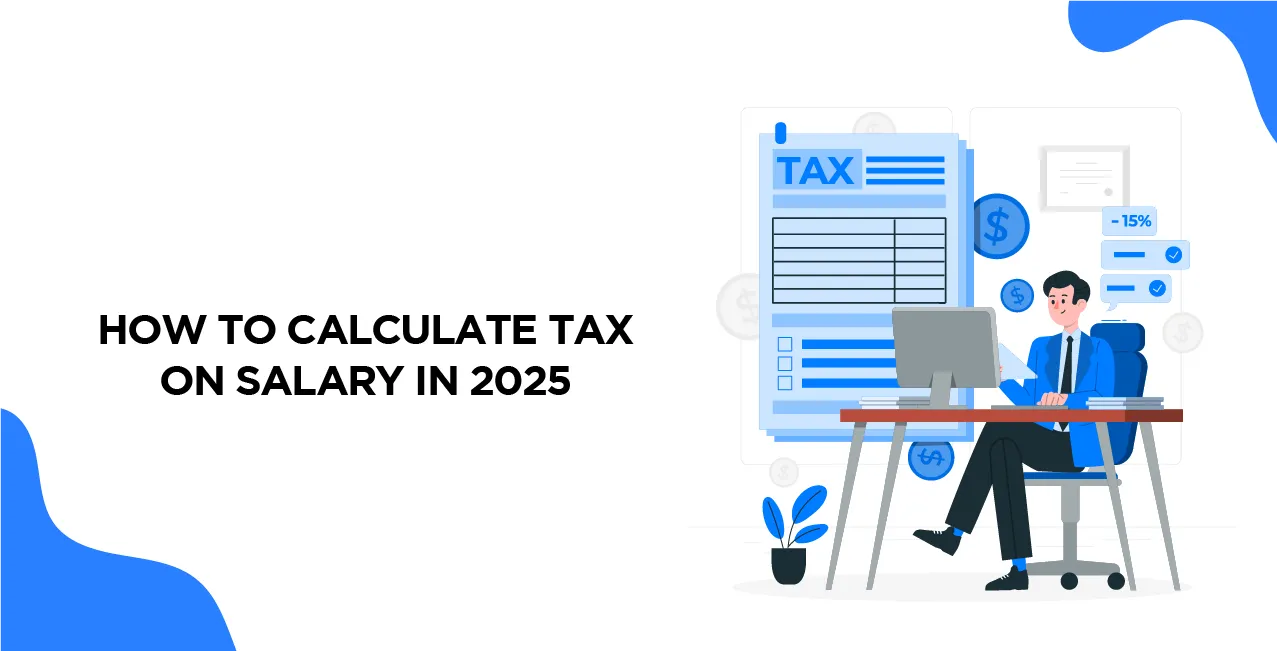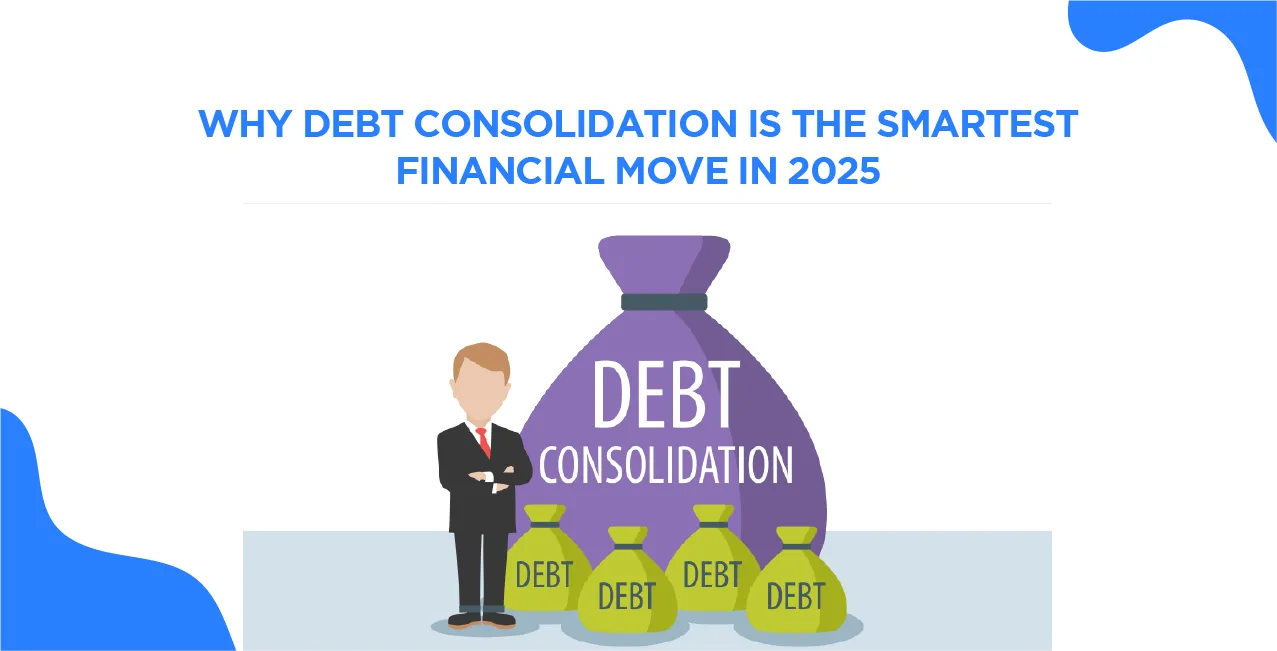
Author
LoansJagat Team
Read Time
6 Minute
29 May 2025
How To Calculate Tax on Salary in 2025 – Complete Guide with Examples
Imagine you’re Nikhil, drawing a ₹12 lakh CTC with a nifty ₹ 50,000 interest from your savings; cool, right? You fire up the Income Tax Calculator and here’s how it clicks:
- Gross Income: ₹12 50 000 (₹12 00 000 salary + ₹50 000 interest)
- Deductions:
- ₹ 1,50,000 under 80C
- ₹ 25,000 under 80D
- ₹ 75,000 standard deduction
- ₹ 1,50,000 under 80C
- Taxable Income: ₹10 00 000 (that’s ₹12 50 000–₹2 50 000)
Plug these into the tool, select FY 2025-26, hit Calculate, and voilà—you see your tax under the old vs new regime side by side. Isn’t it interesting how a few clicks can save you serious cash? This blog guides you through every step, enabling you to plan like a pro!
Understanding Salary Structure
Let’s say Raj, who’s just landed his dream job with a Cost to Company (CTC) of ₹12,00,000 per year. Here’s how his salary breaks down:
Raj’s basic salary is ₹6,00,000. Additionally, he receives a House Rent Allowance (HRA) of ₹2,40,000 and a Dearness Allowance (DA) of ₹60,000. Once a year, his performance earns him a bonus of ₹50,000. As a perquisite, his employer covers health insurance worth ₹30,000.
When Raj adds up his basic salary, allowances, bonus, and perquisites, his gross salary becomes ₹9,80,000. From this, statutory deductions are made: income tax of ₹1,40,000, Provident Fund (PF) of ₹72,000, and Employee State Insurance Corporation (ESIC) of ₹8,000.
After deductions, Raj’s net salary—the “in-hand” amount—totals ₹7,60,000. His employer’s share of PF (₹72,000) and gratuity provision (₹48,000) push the total CTC back up to ₹12,00,000.
Read More – How to Calculate Taxable Income
Key Takeaways:
- Basic Salary is the foundation.
- Allowances boost gross pay.
- Bonuses & Perquisites reward performance and well-being.
- Deductions shrink gross to net.
- CTC reflects the actual cost to the company.
Component | Amount (₹) | Description |
Basic Salary | 6,00,000 | Core fixed pay |
HRA | 2,40,000 | House Rent Allowance |
DA | 60,000 | Cost-of-living adjustment |
Bonus | 50,000 | Performance incentive |
Perquisite | 30,000 | Health insurance benefit |
Gross Salary | 9,80,000 | Sum before deductions |
Income Tax | 1,40,000 | Statutory tax |
PF | 72,000 | Employee Provident Fund |
ESIC | 8,000 | Employee State Insurance |
Net Salary | 7,60,000 | In-hand pay |
Employer PF & Gratuity | 1,20,000 | Employer contributions to benefits |
CTC | 12,00,000 | Total cost to the company per annum |
What is Taxable Income?
Let’s say Anjali earns ₹10,00,000 annually from her job. She also earns ₹50,000 as interest from fixed deposits. Her total
gross income becomes ₹10,50,000.
She invests ₹1,50,000 in tax-saving instruments under Section 80C and pays ₹25,000 towards health insurance under Section 80D. After these deductions, her taxable income is ₹8,75,000.
Key Points:
- Taxable income = Gross income – Deductions
- Includes salary, bonuses, and investment income
- Tax-saving investments reduce taxable income
- More deductions = Lower tax liability
So, Anjali’s tax is calculated on ₹8,75,000—not the full ₹10,50,000 she earned.
Income Tax Slabs (As Per Latest Financial Year)
Income Range (₹) | Tax Rate FY 2024-25 | Tax Rate FY 2025-26 | Explanation (FY 2025-26) |
Up to ₹3,00,000 | NIL | NIL (up to ₹4,00,000) | No tax for income up to ₹4 lakh in FY 2025-26 (increased threshold). |
₹3,00,001 – ₹4,00,000 | 5% | NIL | No tax on this range in FY 2025-26. |
₹4,00,001 – ₹7,00,000 | 5% | 5% (₹4L – ₹8L) | 5% tax for income between ₹4 – ₹8 lakh. |
₹7,00,001 – ₹8,00,000 | 10% | 5% | Lower rate of 5% continues till ₹8 lakh in FY 2025-26. |
₹8,00,001 – ₹10,00,000 | 10% | 10% (₹8L – ₹12L) | 10% tax between ₹8 – ₹12 lakh. |
₹10,00,001 – ₹12,00,000 | 15% | 10% | Reduced rate in FY 2025-26. |
₹12,00,001 – ₹15,00,000 | 20% | 15% (₹12L – ₹16L) | 15% tax for this bracket. |
₹15,00,001 – ₹16,00,000 | 30% | 15% | Major reduction from 30% to 15% in FY 2025-26. |
₹16,00,001 – ₹20,00,000 | 30% | 20% | Taxed at 20% in FY 2025-26. |
₹20,00,001 – ₹24,00,000 | 30% | 25% | Higher-income group taxed at 25%. |
Above ₹24,00,000 | 30% | 30% | The top slab rate remains unchanged. |
Key Highlights for FY 2025-26 (AY 2026-27)
- Rebate under Section 87A increased to ₹60,000 – effective tax becomes zero for income up to ₹12 lakh.
- With a standard deduction of ₹ 75,000 for salaried individuals, the net tax liability is nil up to ₹12.75 lakh.
- Rebate not applicable for income taxed at special rates (e.g., capital gains).
- Marginal relief is available to smooth the tax jump just above ₹12 lakh.
How To Calculate Tax on Salary?
Step 1: Calculate Gross Salary
This includes all income from your job and other sources, such as:
- Basic salary
- House Rent Allowance (HRA)
- Dearness Allowance (DA)
- Bonuses
- Perquisites (non-cash benefits)
- Income from other sources (e.g., interest, rental income, capital gains)
Example: Raj earns ₹12,00,000 per year (including salary and fixed deposit interest).
Also Read - Smart Tax-Saving Strategies for Salaried Individuals
Step 2: Subtract Eligible Deductions
Reduce your gross salary by subtracting allowable deductions such as:
- Section 80C (up to ₹1.5 lakh) – investments in PPF, EPF, LIC, ELSS, etc.
- Section 80D – medical insurance premium
- Standard deduction – ₹50,000 for salaried individuals (₹75,000 under new regime FY 2025-26)
- Other deductions – such as home loan interest, education loans, and donations, etc.
Example: Raj claims ₹1,50,000 under 80C, ₹25,000 under 80D, and a ₹75,000 standard deduction.
Total deductions = ₹2,50,000
Step 3: Arrive at Taxable Income
Use the formula:
Taxable Income = Gross Salary – Total Deductions
₹12,00,000 – ₹2,50,000 = ₹9,50,000
Step 4: Apply the Applicable Tax Slab Rate
Refer to the current income tax slab rates (e.g., new tax regime FY 2025-26):
Income Range | Tax Rate |
Up to ₹4 lakh | 0% |
₹4 lakh – ₹8 lakh | 5% |
₹8 lakh – ₹12 lakh | 10% |
... | ... |
For ₹9,50,000:
- 0% on ₹4,00,000 = ₹0
- 5% on ₹4,00,000 = ₹20,000
- 10% on ₹1,50,000 = ₹15,000
Total Tax Before Rebate = ₹35,000
Step 5: Subtract Tax Rebate (if applicable)
Under Section 87A, if your taxable income is up to a certain limit, you get a rebate:
- FY 2025-26: ₹60,000 rebate if income ≤ ₹12 lakh
Raj’s income = ₹9,50,000 → Eligible for full ₹60,000 rebate
Since his tax is only ₹35,000, his final tax = ₹0
Final Outcome:
- Gross Income: ₹12,00,000
- Total Deductions: ₹2,50,000
- Taxable Income: ₹9,50,000
- Tax before rebate: ₹35,000
- Rebate: ₹60,000
- Final Tax Payable: ₹0
What is the Income Tax Calculator?
An Income Tax Calculator is an easy online tool that helps you estimate your tax liability based on your income and deductions. It allows you to compare the tax payable under the old vs. the new tax regimes, helping you choose the most beneficial option.
The calculator is updated as per the latest tax rules from Union Budget 2025, making it useful for financial planning.
How to Use the Tax Calculator (FY 2024-25 & FY 2025-26)?
- Select the financial year.
- Choose your age (important under the old regime).
- Click on the ‘Continue’ option.
- Enter your gross salary (excluding exempt allowances like HRA).
- Add other income – interest, rental, digital assets, etc.
- Enter deductions under 80C, 80D, 80G, etc.
- Click on the ‘Calculate’ button.
The tool then shows your tax payable under both regimes, helping you decide which one offers more savings.
Conclusion
That’s it—you’re ready to handle your taxes like a pro!
You now know how your salary is split (basic, HRA, bonus), how to remove deductions (like 80C, 80D, and standard deduction) to get your taxable income. You also saw how the new tax rules can mean zero tax up to ₹12.75 lakh!
Just use the Income Tax Calculator—add your details, click calculate, and pick the better option. Super simple!
FAQs
Q1: How is taxable income calculated from my salary?
Taxable income = Gross income – Deductions like 80C, 80D, and standard deduction.
Q2: What is included in gross salary?
Gross salary includes basic pay, HRA, DA, bonuses, perquisites, and other income like interest.
Q3: What are the latest tax slab rates for FY 2025-26?
The new regime offers 0% tax up to ₹4 lakh and rebates, making tax nil up to ₹12.75 lakh.
Q4: How do I know which tax regime is better for me?
Use the Income Tax Calculator to compare old vs new regimes based on your income and deductions.
Q5: Can I pay zero tax on a ₹12 lakh salary?
Yes, under the new regime with standard deductions and rebate, tax can be nil up to ₹12.75 lakh.
How to Guides – Investing, Trading & Wealth Building | ||
About the Author

LoansJagat Team
‘Simplify Finance for Everyone.’ This is the common goal of our team, as we try to explain any topic with relatable examples. From personal to business finance, managing EMIs to becoming debt-free, we do extensive research on each and every parameter, so you don’t have to. Scroll up and have a look at what 15+ years of experience in the BFSI sector looks like.

Quick Apply Loan
Subscribe Now
Related Blog Post


